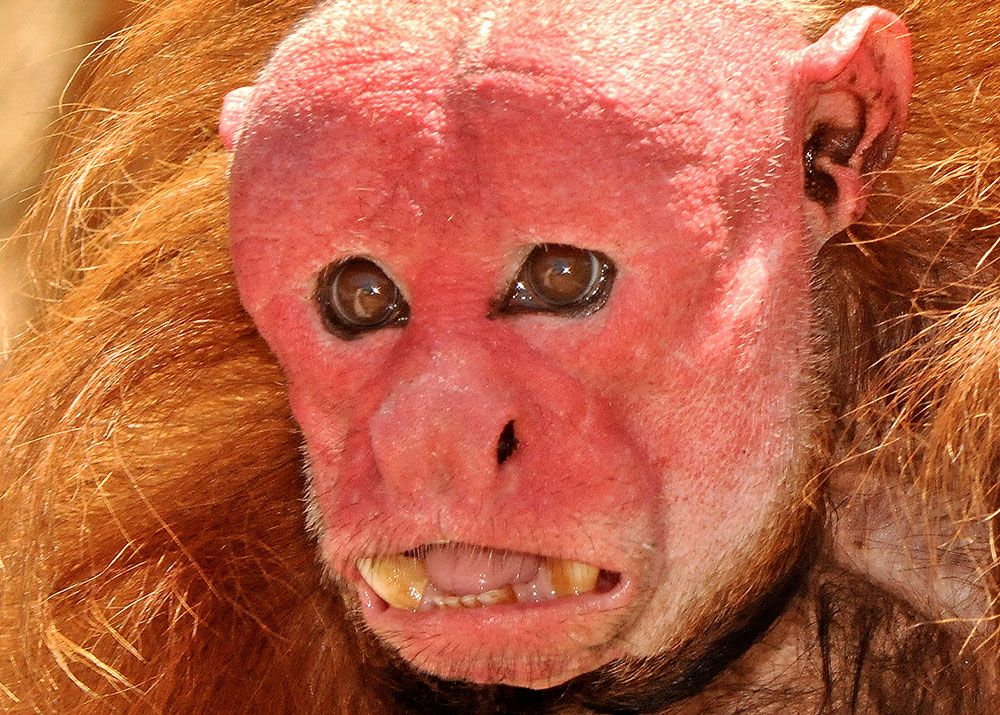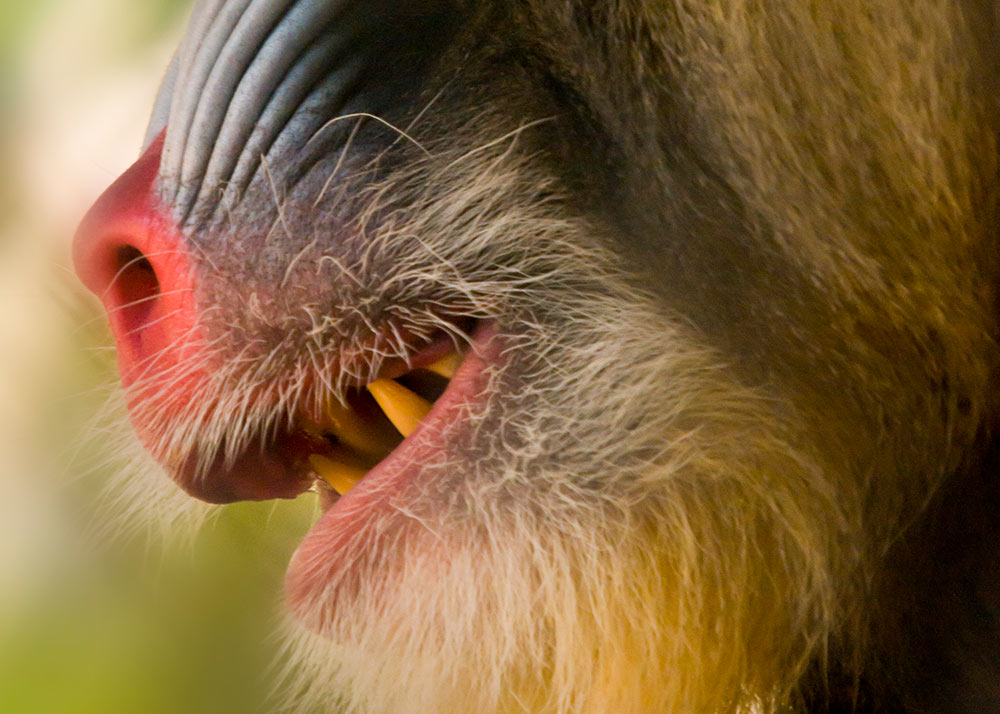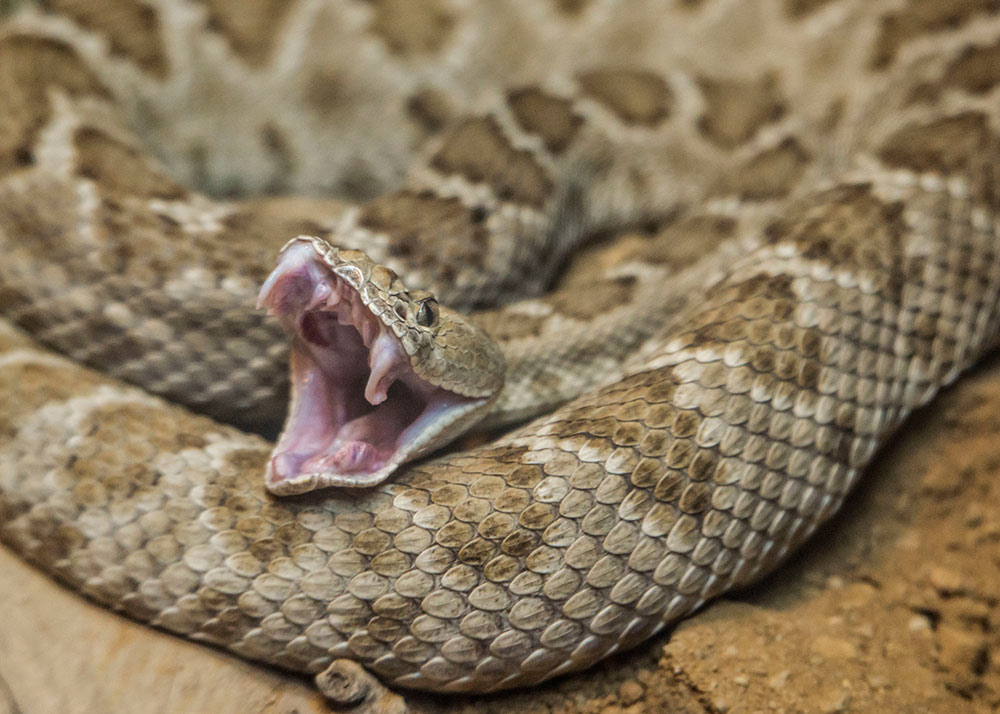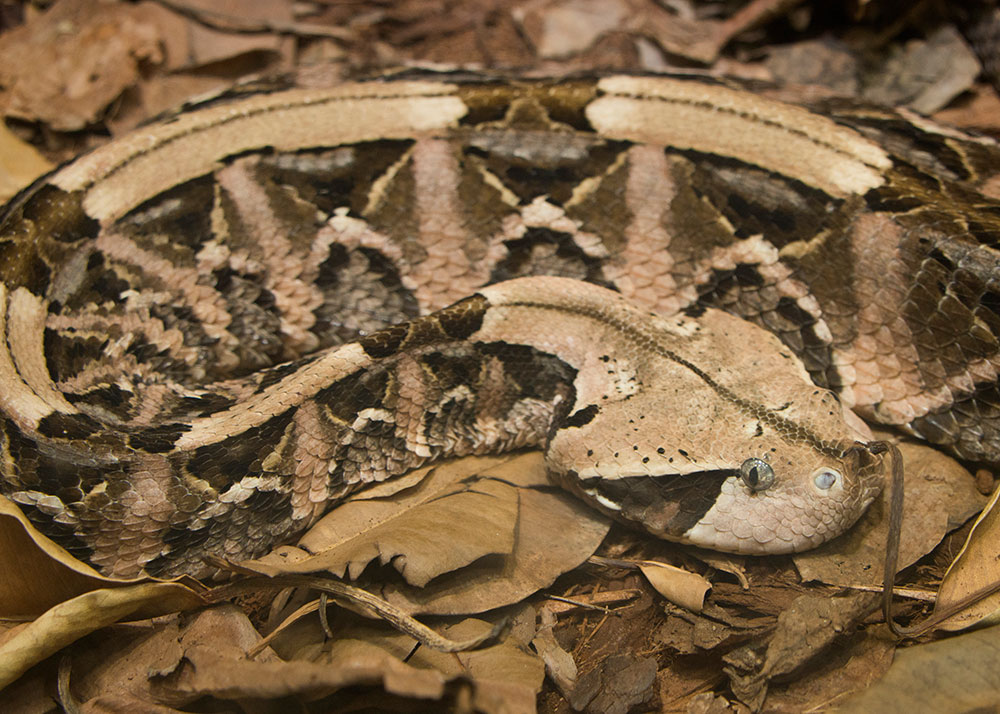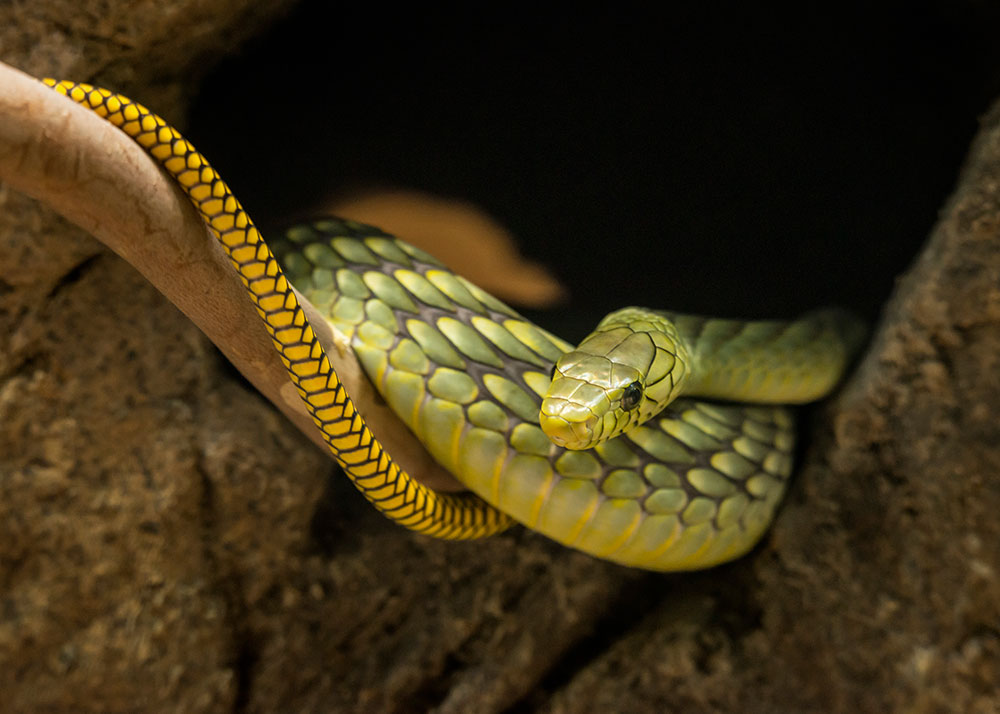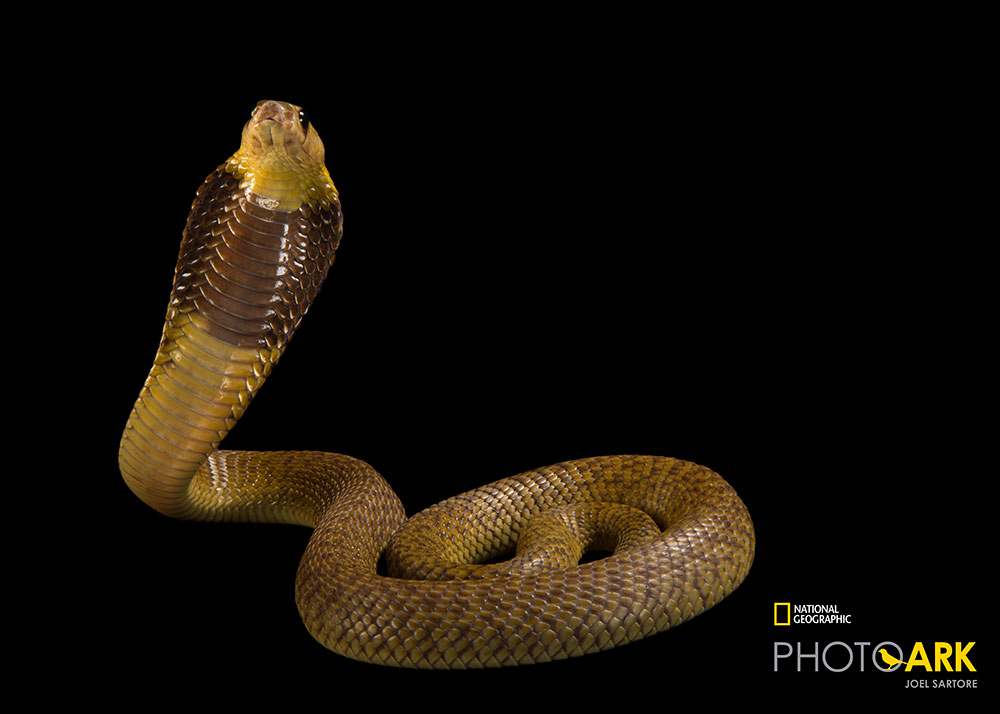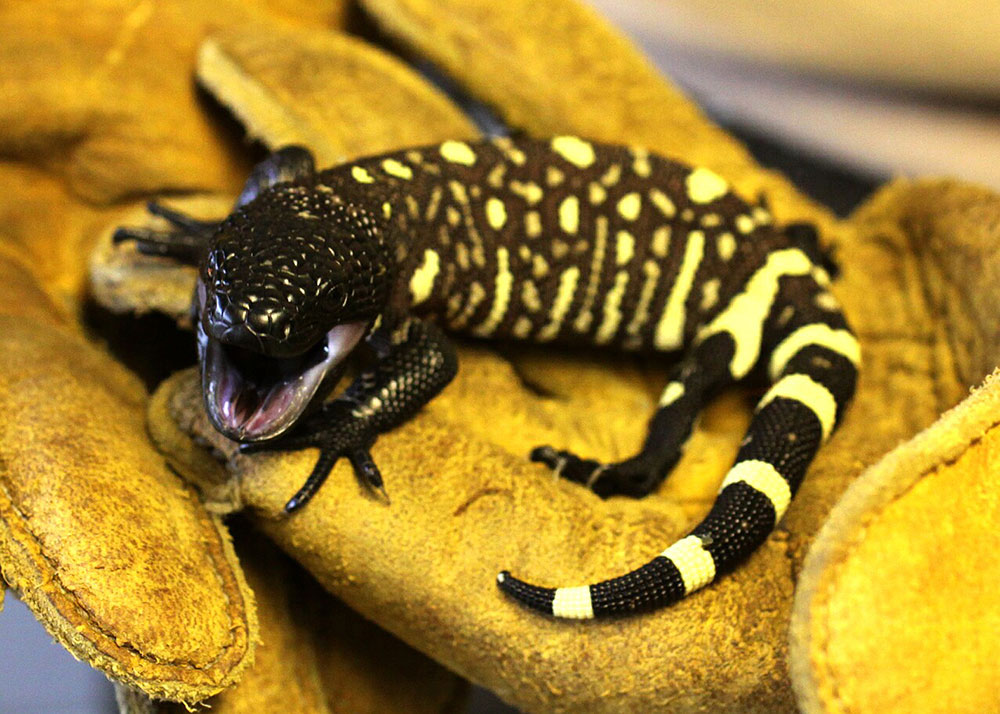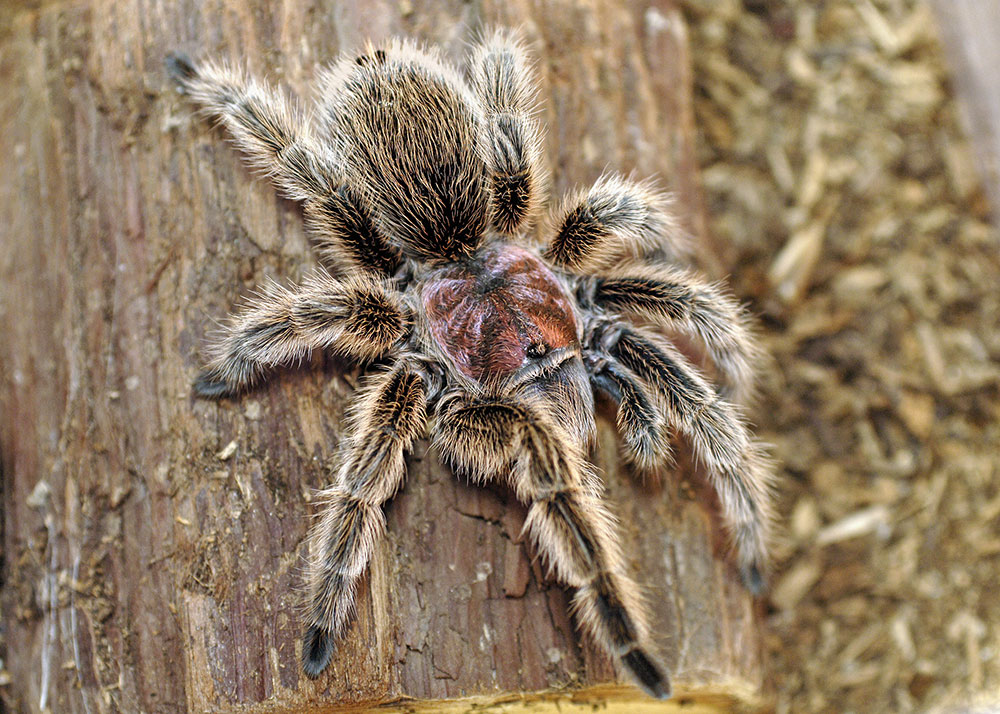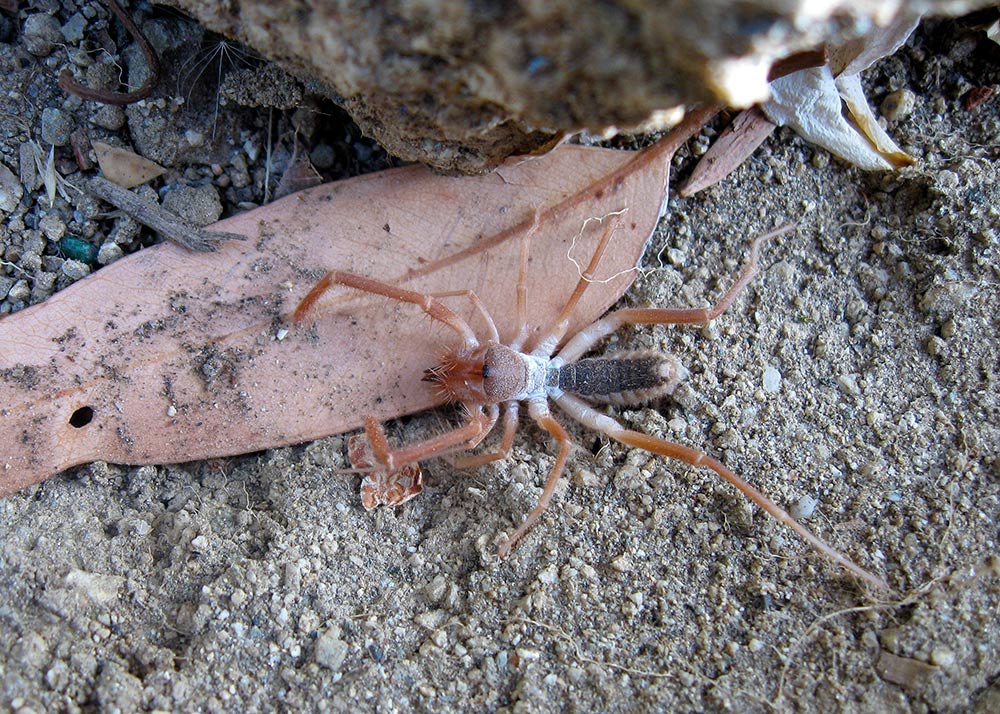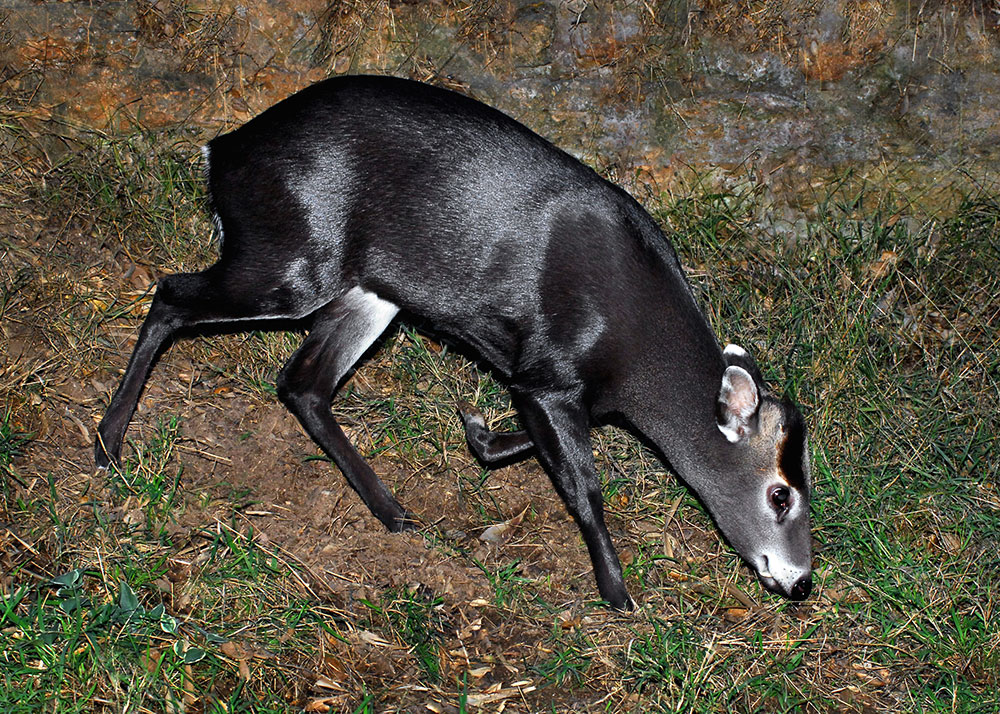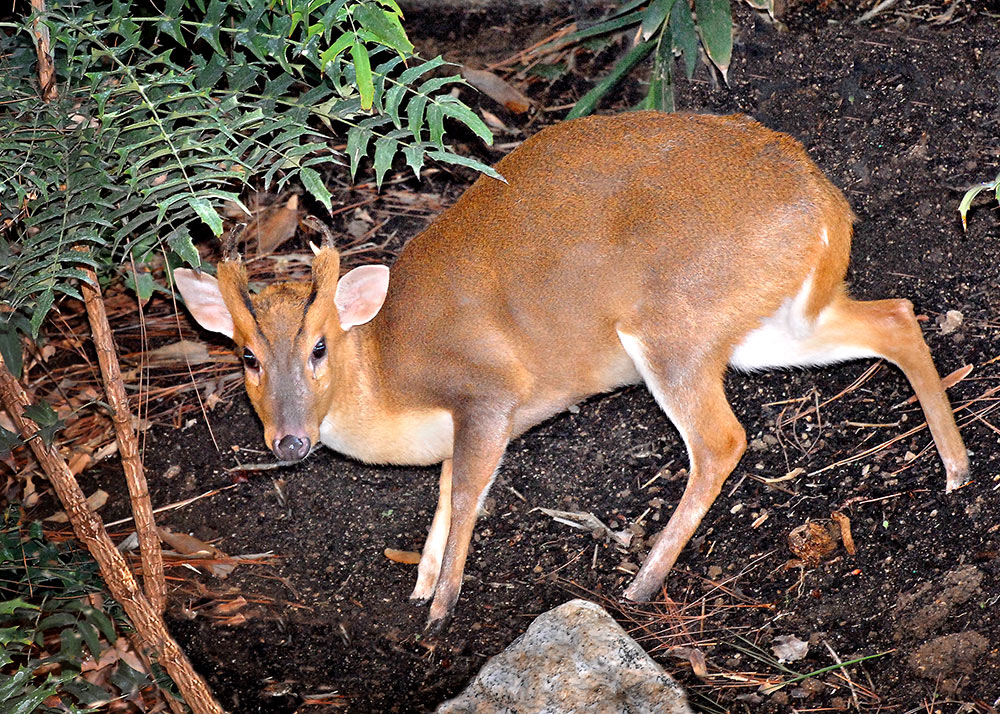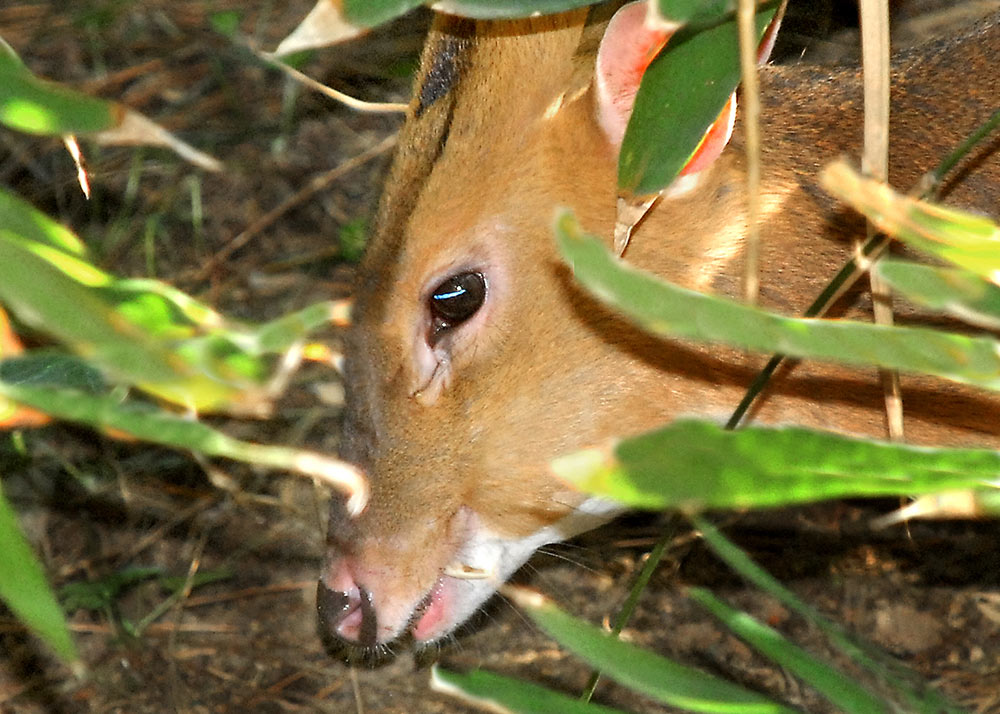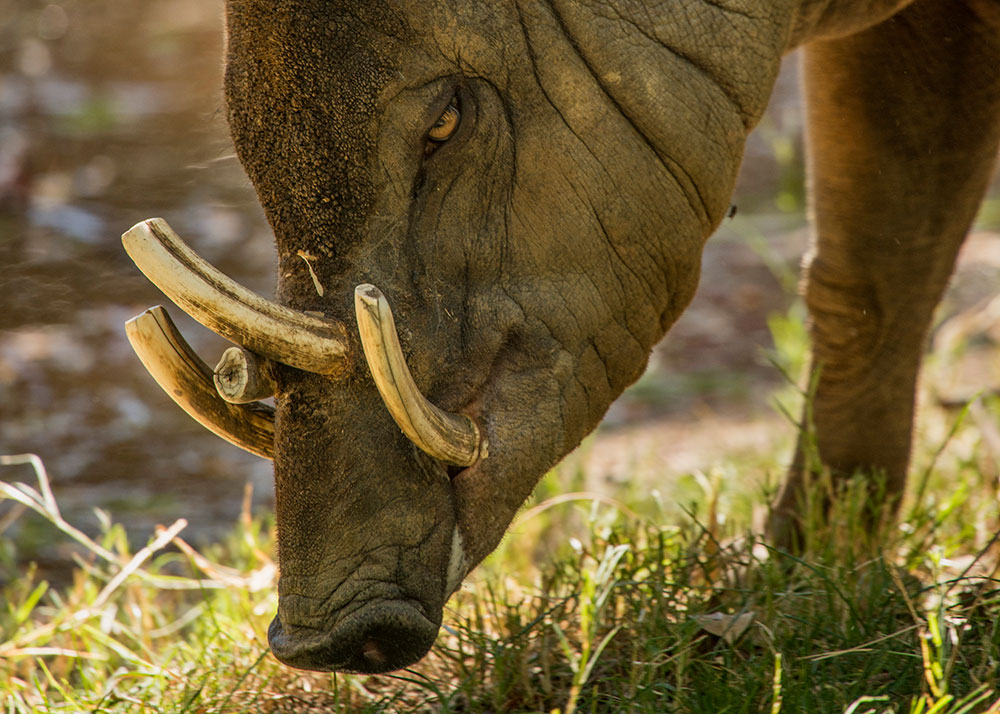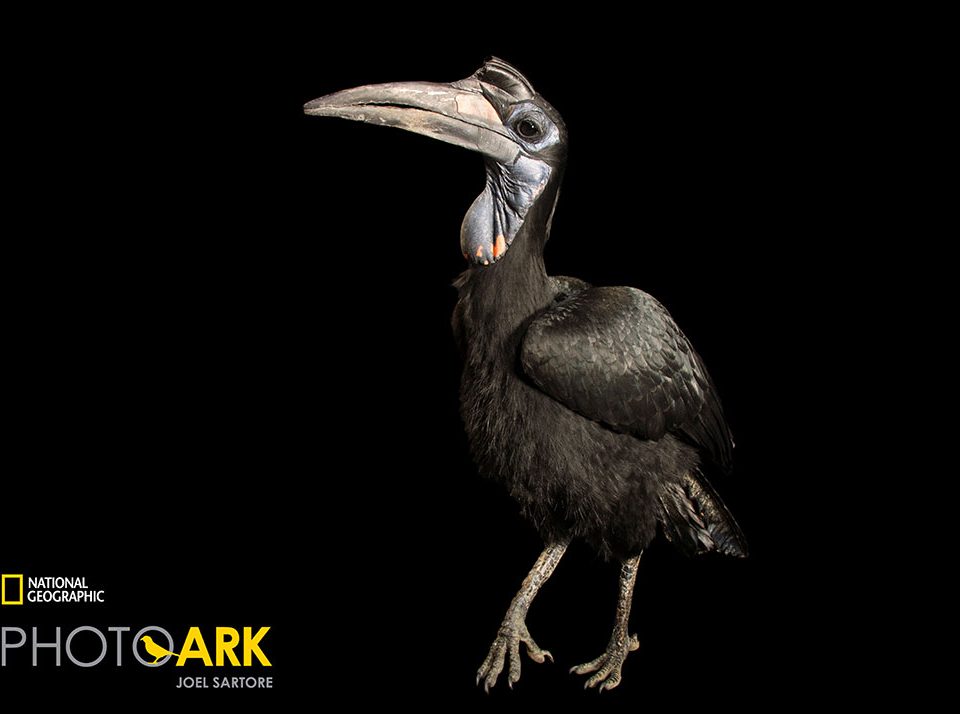A Fang-tastic Journey

Coming Soon: A “Golden Road” Opportunity
October 1, 2017
National Geographic Photo Ark at the L.A. Zoo
October 1, 2017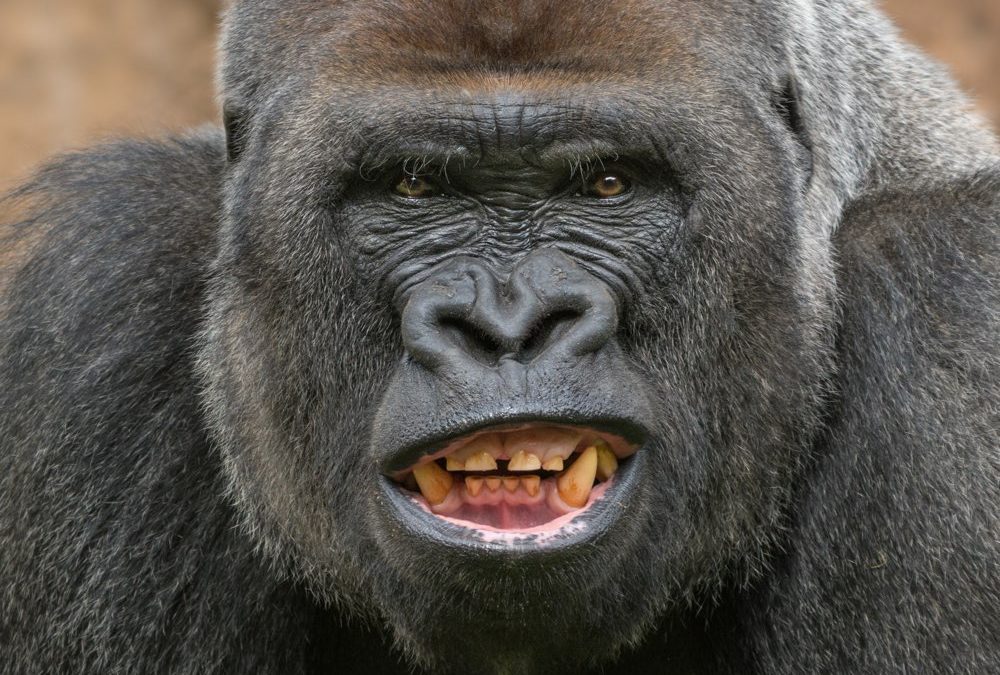
Gorillas have pronounced canine teeth. Photo by Jamie Pham
People always seem fascinated by what they do not possess. Case in point: fangs. Although human canine teeth (also called eye teeth because of their position under the eyes) are more pronounced than their neighboring incisors and premolars, they don’t really measure up when compared with other animals'.
All primates except humans have prominent canine teeth that are used to communicate aggression or for practical applications, such as opening tough nuts. Biologists are still uncertain why we lost our fangs. One prevailing theory is the advent of cooking changed our dentition because it reduced the need for massive teeth. Another explanation is that the development of human speech enabled us to express aggression by using angry words rather than baring scary teeth.
When you think of fangs, the first animals that probably come to mind are snakes, which have some of the most specialized teeth in nature. Snake fangs are basically hypodermic needles that inject venom into prey animals, and there are three main types of snake fangs.
In some venomous species, the fangs are located in the front of the mouth. All vipers, including rattlesnakes, Gaboon vipers, copperheads, cottonmouths, and Mangshan vipers (all of which can be found in the LAIR) are front-fanged, and these sophisticated teeth can be rotated independently and folded back into the mouth when not in use.
Fixed front-fanged snakes such as cobras and mambas (also on view in the LAIR) have small, non-movable fangs at the front of the mouth. Some cobra species’ fangs are versatile: they can be used to inject venom or to spray it. In still other venomous snake species (such as hognose snakes and mangrove snakes), the fangs are located in the rear of the mouth.
By studying snake embryos, a researcher at the University of Leiden discovered that in early stages of development, all snakes have rear fangs. This suggests that all venomous snakes likely evolved from a common rear-fanged ancestor.
A clue to the earliest venomous snakes can be found in the world’s only venomous lizards. Beaded lizards and Gila monsters are venomous, but they don’t have the sophisticated venom delivery system of snakes. Their venom glands secrete the toxins by way of grooved fangs in the back of their mouths, and they envenomate their prey by biting and using a chewing motion to work the venom in.
All true spiders are also venomous, and their fangs, like those of venomous snakes, have evolved to inject venom into their prey. Since spiders most often prey on other arthropods—which all have a hard shell-like exoskeleton—scientists and engineers have been studying the form of spider fangs in hopes of discovering better ways of designing tools for piercing, and medical devices such as hypodermic needles.
Many other animals from big cats to fruit bats have impressive canines—but deer? It’s true! A surprising number of ungulates (hoofed animals) have fangs.
The next time you visit the Winnick Family Children’s Zoo, look closely at the male chevrotain, and you might just see his oversized canines. The name “chevrotain” comes from the French word for “goat,” and in Malaysia, these petite creatures are known as mouse-deer. They belong to the same order as such heavyweights as hippos, bison, and giraffes. Because they inhabit dense rainforests and mangrove thickets, antlers or horns would get tangled in vegetation, so the males grow fang-like tusks to impress females and spar with other males.
Other ungulates that live in dense forest habitats also have this toothsome adaptation. Tufted deer have been described as the “vampire of the deer world” because the males of this species (found in the high elevation forests of China, India, and Myanmar) sport long, sharp canine teeth as well as simple, spiked antlers.
Reeves’s muntjac is a small, stocky deer native to Taiwan and central, south, and southeast China. Like the chevrotain, they generally inhabit dense woodland areas and rocky terrain with steep ravines where large, heavy antlers would be cumbersome. In addition to the long canine teeth, the males have short, spiky antlers. Reeves’s muntjac are also known as “barking deer” because the of sharp calls they use when alarmed or threatened. Sometimes a sharp call can be as useful as pointy horns.
Interestingly, although it is truly a pig, the babirusa is known as the “pig-deer” of Sulawesi. Like other pigs, males of this species grow tusks, but these are tusks unlike any other. The upper canine teeth start out growing in the usual downward-pointing position but as the boar matures, the tooth sockets rotate so that the tusks point upward, eventually emerging from the upper part of the animal’s snout. Eventually they curve around and form an arc that parallels the lower canines.


